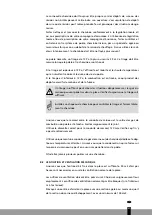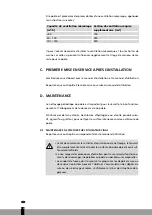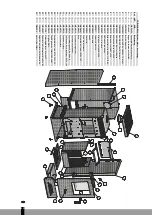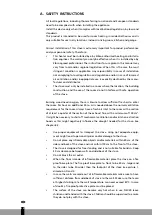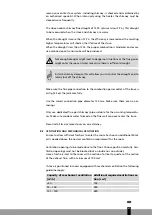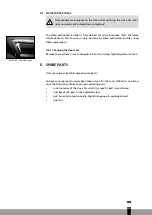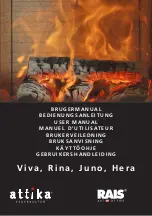
37
4
season your entire stove system -including chimney- is checked and maintained by
an authorized specialist. When intensively using the heater the chimney must be
cleaned more frequently.
the stove needs a chimney/flue draught of 12 pa. (plus or minus 2 pa.). this draught
to be measured when the stove and chimney are warm.
When the draught is more than 12 pa. the efficiency is lowered and the resulting
higher temperatures will shorten the lifetime of the stove.
When the draught is less than 12 Pa. the proper combustion is hindered, and exces-
sive carbon deposits and smoke will be produced.
not enough draught might lead to dangerous situations as the flue gasses
might enter the room. Always make sure there is sufficient draught.
G
install a chimney damper, this will allow you to control the draught and to
totally shut off the chimney.
make sure the flue pipe connection to the combustion gasses outlet of the stove is
air tight. seal the joint carefully.
use the correct connection pipe diameter 120 mm. make sure there are no nar-
rowings.
only use dedicated flue gas (chimney) pipe suitable for the occurring temperatu-
res. make sure condens water formed on the flue wall can never enter the stove.
never install two or more stoves on one chimney.
b.2 veNtIlAtION ANd MechANIcAl veNtIlAtION
ensure to allow sufficient fresh air to enter the room. per hour an additional 50 m3
air is needed above the normal ventilation requirement for the room.
ventilation openings to be made close to the floor. choose position carefully. ven-
tilation openings must not be blocked (not on inside nor on outside).
have a fresh air inlet to the room with a section of at least a quarter of the section
of the exhaust �ue, with a minimum of 100 cm2.
if stove is positioned in rooms equipped with mechanical ventilation the following
guidelines apply:
Capacity of mechanical ventilation
[m
3
/h]
Additional required ventilation sec-
tion [cm
2
]
<50
140
50 – 100
280
101 – 150
420





